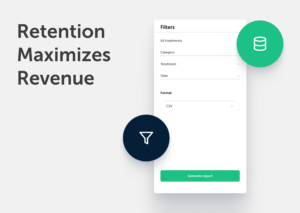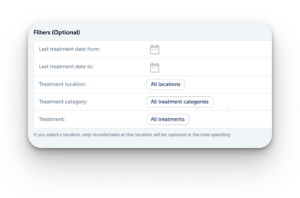
Starting the year off with a retention analysis is vital for a clinic because it allows the clinic to understand its current state of patients that did not visit the clinic for an x amount of time which eventually can lead to “lost” customers. By analyzing the clinic’s retention, the clinic can determine which areas are performing well and which areas may need improvement. This can help the clinic develop strategies to retain more patients, leading to increased efficiency and profitability.
In addition, a retention analysis can help the clinic identify trends and patterns that may not be immediately apparent, which can inform decision-making and help the clinic to serve its patients better. Overall, starting the year with a retention analysis can help the clinic to understand its current state better and make informed decisions to improve in the future.
What is retention
Retention refers to the ability to retain or keep something, such as information, skills, or patients. It is a measure of how well a clinic is able to maintain its resources over a period of time. For example, a clinic might track its employee retention rate to see how well it can keep its employees, or it might track its patient retention rate to see how well it can keep its patients. Improving retention can be important for clinics because it can lead to increased efficiency and profitability.
Why is it important for your clinic
Retention is important because it can help a clinic or business to maintain its resources, which can lead to increased efficiency and profitability. For example, if a clinic retains its patients, it saves the time and resources needed to constantly bring in new patients. Similarly, if a business can retain its employees, it can save the time and resources needed to constantly find and train new employees. In addition, retention can also lead to increased customer satisfaction, as retaining customers or patients can lead to a stronger relationship between the clinic or business and the individuals it serves.
Steps to identify and bring back patients
- First, identify the key metrics you want to track for retention in your clinic. These might include the percentage of patients returning for follow-up appointments, the time between visits, or the number of no-shows.
- Next, collect and organize your retention data. This could mean pulling data from your electronic medical record system or manually creating a spreadsheet to track retention.
- Once your data is organized, analyze it to identify trends and patterns. Look for factors that could be impacting retention rates, such as the length of time between appointments, or the type of treatment patients are receiving.
- Based on your analysis, consider implementing strategies to improve retention in your clinic. Strategies like offering reminders for upcoming appointments, providing additional education or support to patients, or adjusting your appointment scheduling processes.
- Finally, follow up with patients via email to check on their progress and encourage them to return for follow-up appointments. Consider sending personalized emails based on each patient’s specific needs or concerns. Be sure also to include any relevant information or resources, such as appointment reminders or links to educational materials.
How to use Clinicminds retention report
To get an overview of patients that did not re-visit the clinic for the last x period download the patient retention report, go to Menu > Reports > Patient retention in Clinicminds. In this report, you will find an overview of patient contact details, their total spending, and their spending specified by treatment/treatment package/product. You can filter the timeframe, locations, treatment, and treatment category you would like to target.
Example
Today is Jan 1st, 2023, and I would like to send an email to patients that previously received a Botox treatment, but who did not revisit the clinic for a minimum of six months. We chose to select a minimum of six months as we think it’s a bit longer than the average time gap that patients usually take for revisiting us for a repeat treatment.
So basically, every patient that came for a botox treatment longer than six months is a potential churning customer.
We decided to set the filter between six and eighteen months ago as we think that people that did not visit our clinic for more than 18 months are not likely to visit us again.
The filter in the report should be in this case:
- Last treatment date from: 01-01-2021
- Last treatment date: 01-07-2022
- Treatment: Botox

Finally, generate the report and upload the target group list to your email campaign tool such as Mailchimp and write an engaging email to encourage these patients to visit your clinic again. You should even consider calling the top spending / loyal customers personally and asking for the reason why they are not making an appointment.
To learn more about clinicminds contact us.
